Social Impact Internships: Group Project, 2020
MIT architectural cohort Group Project used postcards to navigate community collaboration through COVID-19. Check out their exciting work!
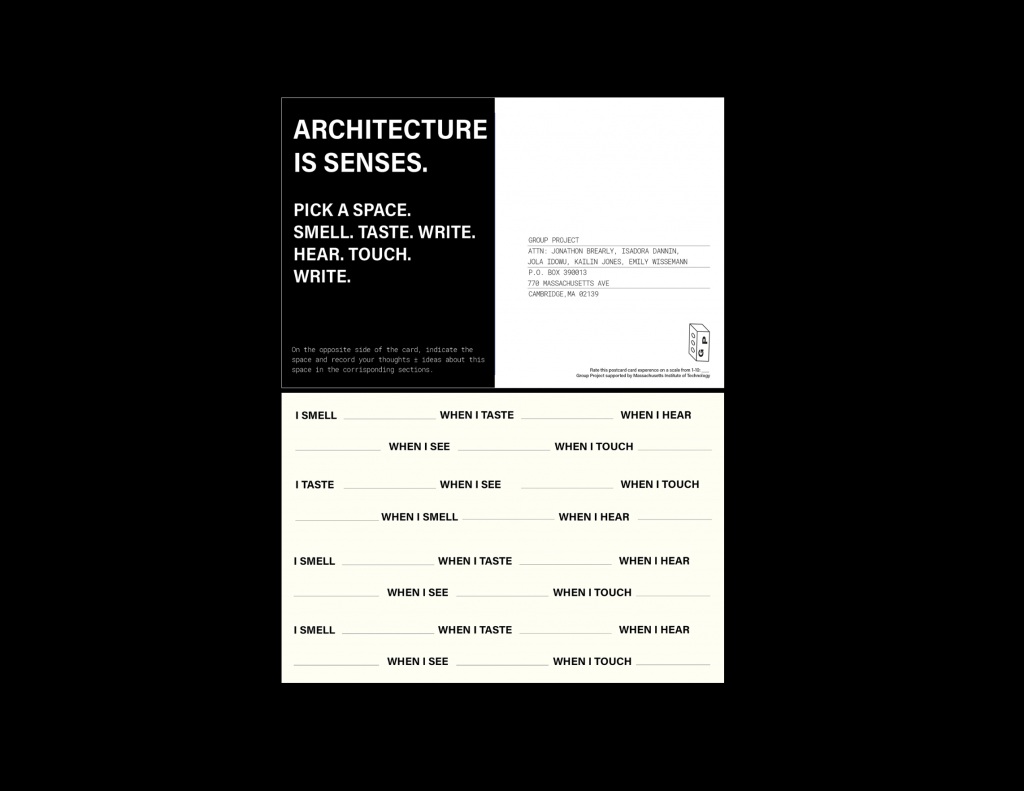
Group Project began as a student-led initiative at MIT in 2017. At the time, the Group was established as a collective for students in the School of Architecture and Planning (SA+P) to design for positive societal impact. Given the nature of long-term community engagement, however, the Group has extended over time beyond the length of a semester-long project or thesis, or even a planning and architecture degree. The Group is now tied to both existing students and alumni who have committed to maintaining their relationship with the collective and specifically the relationship with GrowingChange.
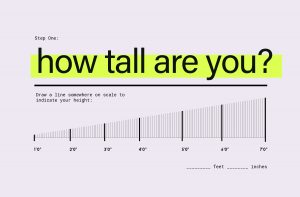
Group Project, the collective, has developed and evolved in tandem with its involvement with GrowingChange, a non-profit organization in North Carolina working on youth-led projects surrounding the recuperation of a decommissioned prison site. Currently, the Group is a combination of students and practitioners in the fields of architecture and urban planning who believe that our creative and technical knowledge must be put in service of socially responsible architecture.
The most common understanding of the relationship between architect and client is one often immersed in conflict. The architect or designer has their own aesthetic sensibilities, and the development of these sensibilities is the primary focus of architectural pedagogy, while the client is seen as a quasi patron-slash-constraining actor. If architecture is to be used as a tool of social innovation and activism, however, the architect-client relationship must change. It must be shared and symbiotic.
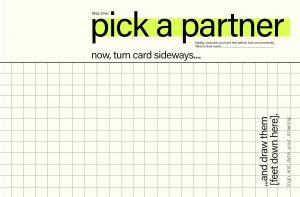
Our goal as Group Project is to provide architectural and planning services to community nonprofits working on transformative projects in underserved communities in the US. We believe that this means focusing not only on making great buildings, but on rethinking the design process in order to empower communities to achieve their goals. By grappling with contemporary social and political issues in these projects, we continually seek to push the boundaries of our disciplines and support long-term community engagement. With the outbreak of COVID-19, we had to rethink even more of these processes.
This past summer, with the support of PKG funding, Group Project members Jonathon Brearly, Jola Idowu, Kailin Jones and Emily Wisseman continued the Group’s collaboration with GrowingChange from afar. Group members entered the work with GrowingChange questioning how to engage with communities, particularly communities Project members were not personally a part of, and how to direct the agency of design processes to members of the community who are typically disadvantaged and unheard in decision-making for the built environment.
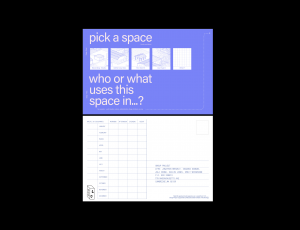
The Group’s relationship between GrowingChange is one founded on service and shared skills, centering the ‘client’ as the foremost expert because of their experience within the social context of the physical site. The designer must respond to community experts and act as a technical tool in design processes. In this way, Group Project flips the normative hierarchy of knowledge often practiced in the field. Our role is not extractive as in the history of design studios in architecture schools, but rather attempts to inspire change through the act of listening and co-creating.
This summer, as Group Project attempted to start a new design project for GrowingChange, we were faced with the common dilemma of not knowing where to begin. What does GrowingChange want? And how do they want to get there? In the time of COVID-19 and Zoom meeting sessions, we needed to reimagine the methods of communication and connection. In truth, to Zoom back and forth with a group of 11 Youth Leaders–a method that requires time, space, reliable internet and devices–was impractical for all parties. So, we asked ourselves a new question: How do we communicate as designers and co-creators without in-person meetings?
COVID-19 has meant that this summer we managed only one short Zoom call with the Youth Leaders and Noran. With Jola, Emily, and Jon as new members of Group Project, building relationships with Youth Leaders and members of GrowingChange was the fundamental provocation of our summer work. The context of our newfound long-distance relationship prompted us to imagine a way of remote engagement that was personal, interactive, artifact driven, and most of all, simple. Thus, the Postcard.
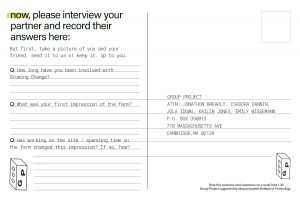
The Postcard provided us with a simple format that would contain short activities to be done throughout the Fall. Accompanying the Postcards, we wanted to include a set of tools (laser measurer, chalk line, and laser levels, audio recorder, polaroid camera) through which Youth Leaders could engage with and understand the site in new ways. Group Project postcards aim to gather information about the site by collecting artifacts and experiences to create a visual and auditory archive of the physical space. Each postcard outlines a short exercise, and Youth leaders will be asked to choose one postcard per week to complete in no specific order and return to the Group Project.
The current deck includes exercises of three themes: site feedback, historical commentary, and interactive making exercises. The exercises in round one are intended for the Youth Leaders to gather information we can use to create a self-guided tour of the site and to inform future design collaborations between GrowingChange and Group Project.
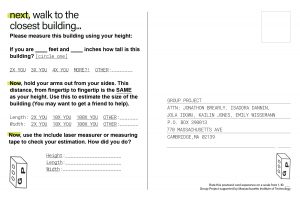
As we began to design and construct the postcards, we realized that in order to receive the best information, the skills of design we needed to learn could be shared and done from home. The Group’s remote situation proved this work could happen remotely and with minimal technology. Through the postcards, we were able to exchange information, share our technical knowledge of design, and empower community members with simple tools to better understand the workings of their space.
The purpose of these cards shifted to also include techniques and instructions that did not “baby” Youth Leaders, but granted them the responsibility and context to create and design their site in a way that did not require our translation. Therefore, these cards could be used as a first step towards a different form of co-creation that sees the Youth Leaders as co-designers themselves and considers a reciprocal form of sharing.
Over time, as the Youth Leaders learn the simple techniques of design through each of the exercises, the processes of sharing between Group Project and GrowingChange will hopefully become a transformative and empowering relationship that will continue for years to come.
To learn more about GrowingChange visit http://www.growingchange.org
Interested in pursuing paid, social impact opportunities with the PKG Center? Visit our Social Impact Internships page and our PKG Fellowships page to learn more about how to fund your public service project!
Have an idea or a passion project related to social innovation? Check out our annual IDEAS competition, where teams of MIT students can receive up to $15,000 in seed funding to launch their social impact ventures!
Tags: Architecture, Social Impact Internships, Social Impact Internships Summer 2020, Urban & Rural Planning
